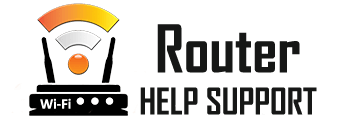10.0.0.2 - Admin Login
What is the 10.0.0.2 IP
10.0.0.2 is a private IP address used as the default IP address of many network routers. Being and IP address, makes it an unique identifier of a device in a TCP/IP network - such as your home local network or your office LAN. And since 10.0.0.2 belongs to the 10.0.0.0 A Class range, that ultimately makes it of the private IP address type. Such IP addresses are only assigned to devices such as computers, printers, laptops and IoT devices in a local network - meaning they are not accessible directly from the Internet and require a router to act as a proxy of the Internet traffic to and from all the devices in a local network. This common IP address ensures devices are properly connected to the network without IP conflicts.
Login at 10.0.0.2
Access your router as Admin
How to Login to your router with IP address 10.0.0.2
Accessing your 10.0.0.2 router is important especially when in need to change certain settings or configuration related to your local network, its security or to have some idea of the current status of your Intranet and Internet connectivity. Below are the login steps for doing so:
Connect to the 10.0.0.2 router by using an Ethernet cable or an active WiFi network of your router if you have the WiFi password
Open your preferred web browser and enter in the address bar http://10.0.0.2 or //10.0.0.2 or just 10.0.0.2
If everything is well with your local connectivity you will be presented with the admin login prompt requiring a username and password
Enter the admin account username and password and if you don't know them look for such somewhere on the actual router device - a sticker or manufacturer plate. The default username and password are often set by manufacturers but can be changed for security purposes.
What Router Settings can be modified at 10.0.0.2
Most network routers, if provided by your ISP (Internet Service Provider) do not have all the features available for you as the user to change and modify. But in some cases, especially if you bought your wireless router separately, then having admin access to it basically enables you to do any modification of its parameters and settings. You could for example change the router IP address from 10.0.0.2 to something else, which of course would lead to you having to change the default gateway given to devices which are connected in your local area network and need Internet Access. The basic setup of your router allows for such changes to be made easily through the admin panel. Admin privileges in a 10.0.0.2 router also give you the ability to reset the WiFi router to its factory settings, to apply parental controls, check your public IP address, or to assess your Internet connection for issues or connectivity problems.
Troubleshooting 10.0.0.2 Connectivity Issues
The 10.0.0.2 Login page does not load
This would mean that you are probably not connected to the local network or you haven't been assigned automatically with the correct IP address, or the router IP address is different from 10.0.0.2. Check your network adapter status for details on your local connection. If the issue persists, pressing the reset button on the router can revert it to default credentials and settings.
Unknown username and password for the admin panel of 10.0.0.2
The login page loads but upon entering the admin credentials you get an error of the sort: "Incorrect username or password". Naturally that means that you have the wrong username and/or password. What you can do is search for them on the Internet or look on the back of the router device, because most router brand manufacturers have the default admin login credentials there.
No Wi Fi connection to 10.0.0.2
If you see the router SSID (WiFi network name) in the available WiFi connection list of your phone or computer, but fail to authenticate by using a known password or such that has been provided to you by the ISP, then what would solve the issue is either: 1) ask the support of your Internet Service Provider for the accurate WiFi Password; or 2) Look for the default WiFi password on the back of your router or eventually reset it to its default settings in order for the default password to be set.
